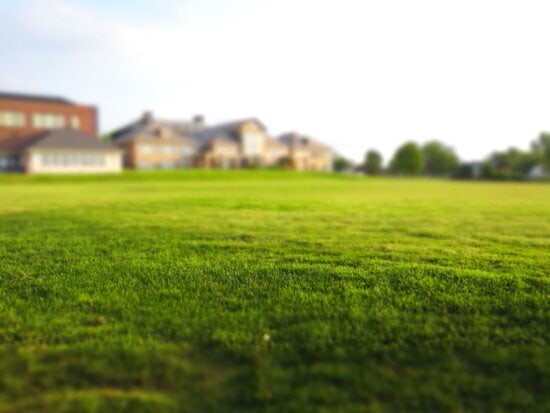The summer months can create a lot of problems and obstacles when it comes to maintaining a healthy and good looking lawn. While it’s the most exciting time of year for home owners and lawn experts to appreciate their months of hard work, it can also prove to be one of the most frustrating periods of time as well. Summer is when our lawns will begin to flourish and look most vibrant, but it’s also a time where they can be most vulnerable and prone to developing unforeseen problems. After so much time spent carefully manicuring and preparing your lawn, the last thing you want to see are defects.
Summer lawn diseases can be some of the most damaging issues that we encounter. Being mindful about how we maintain our lawns leading up to the summer months is important when it comes to preventing lawn diseases. Even with taking the proper precautions providing the right care leading up, summer lawn diseases can still find a way to invade healthy and well kept lawns. When this happens, it can be hard to identify the diseases and their root causes, which in turn causes frustration when trying to treat it.
A turfgrass disease is any infectious disease caused by microscopic fungi that invade the grass. These fungi need a “host” in order to survive and reproduce whether it is dead or alive. In the case of infectious lawn disease, the host plant in this case is the grass. The fungi also need favorable conditions, such as moisture level and temperature, in order to thrive. We have compiled a list below of the more common summer lawn diseases that property owners will often deal with in the areas of New Jersey and Pennsylvania.
Summer Patch
Appearing in irregular or circular shapes of yellowish colors, summer patch is frequently found in lawns that have areas of hot and compacted soil with poor drainage. Oftentimes summer patch occurs in lawns that have been mowed too low. Most likely there is a center or surrounding area of healthy grass in or around what we call a doughnut style patch. Therefore, this allows those dead spots to become full of many forms of weeds. You may see this during mid-summer, after heavy rainfall, or consistent rain.
Brown Patch
Brown patch is one of the most common lawn diseases you’ll see among cool-season grasses, but it can also affect many warm-season grasses too. This fungal lawn disease is causing your grass leaves to thin and wilt, triggering brown colored dead spots to develop within your lawn. Brown patch shows itself as large spots of grass that appear dry or dead. The patches are generally circular or are in an irregular circle that can be up to three feet wide. The outside of the patch is often darker than the inside.
Dollar Patch
Long periods of high humidity or frequent rainfall may cause the most severe outbreaks of dollar patch. A dollar spot is relatively simple to spot with its roughly 1-inch-diameter circles of tan colored grass. You’ll often observe these spots in small clusters. In the early morning, you may notice cottonlike mycelia in the tan spots. Watering your lawn at the wrong time may extend or increase the incidence of this disease. The most common outbreaks occur when temperatures are moderately warm and change rapidly.
Red Thread
Red thread thrives in climates that offer warm days and cool, moist evenings, making yards in northern states frequent victims of this disease. The symptoms and signs of red thread are distinctive, most common among morning dew, water from rain, or irrigation. While red thread generally doesn’t harm your lawn directly, it does make it susceptible to other diseases and pests, so eliminating it will help keep things more green.
Tips For Summer Lawn Care
Timing fertilizer applications can be critical when it comes to avoiding lawn disease. To keep your lawn healthy and robust, follow a fertilization schedule that fits your grass type and growth cycle. Lawns that are watered deeply and less frequently usually have fewer disease problems. Water during early parts of the day to ensure that grass blades aren’t staying wet for extended periods. Warm and wet grass in poorly drained soil promotes many lawn diseases by activating fungus spores.
Lawn diseases are very complex and can be tricky to identify. Every lawn is different, and in many cases it will take the assistance of a professional lawn care service to accurately determine the issues that are affecting one's lawn. When a disease does compromise your lawn, you may need to use a control, such as lawn fungus control or lawn disease control.
If you are having trouble with any of the problems above, or perhaps another issue pertaining to your lawn, you might begin seeking out the help of an expert lawn care service. Blue Grass Lawn Services specializes in summer lawn care treatment and prevention in New Jersey and Pennsylvania. We can work with you to develop a personalized plan so that your lawn remains healthy and looking its best throughout the summer.
Featured Image: "green grass, lawn, summer, grass," by Adrian Pelletier
